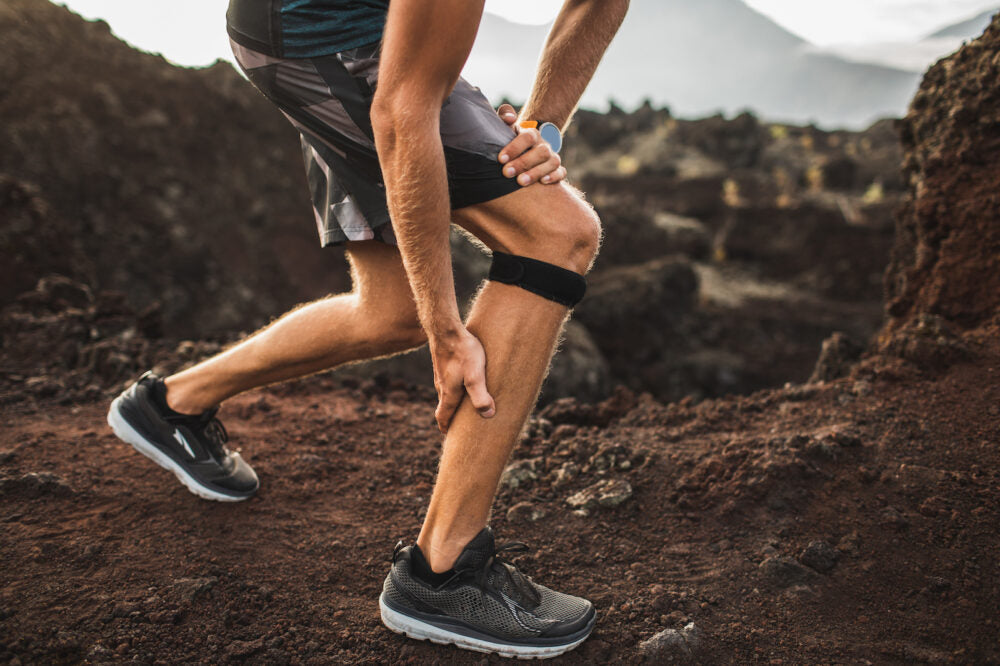Dehydration can cause a range of physical symptoms from mild pesky effects like a headache to more severe impacts like experiencing a rapid pulse or dizziness. If you are experiencing severe dehydration effects, you should always seek medical attention right now.
But, some dehydration effects such as dehydration cramps can be mild but painful. We’ve all experienced a searing charley horse in the middle of the night or a painful stomach cramp. Though not life-threatening, these dehydration effects are uncomfortable and can disrupt your ability to carry out daily tasks.
The simplest solution to dehydration cramps is to make a conscious effort to stay hydrated all day long. This can be tougher than it sounds. In fact, 75% of people are mildly dehydrated on a daily basis.
Taking steps to tracking your daily hydration and integrating habits such as carrying a reusable water bottle can help.
Here, we’ll help you learn how dehydration can cause cramps and how to rehydrate to avoid these painful and pesky side effects.
Understanding how to identify risk factors and mild dehydration symptoms is essential — and learning how to combat these impacts as simply drinking water does not solve the issue.
Electrolytes play a major role in rehydrating your body and your muscles, which is why adding an electrolyte drink mix to your water can help you recover more quickly.
Dehydration Effects: Does Dehydration Cause Cramps?
Dehydration is a medical issue caused by your body losing more fluids and electrolytes than it takes in. It can range from cases with mild dehydration symptoms like extreme thirst to severe cases that can be life-threatening.
Losing more fluids and electrolytes than you’re absorbing makes it difficult for your body to function properly. Dehydration effects can include fatigue, decreased urination, extreme thirst, dizziness — and, of course, cramps. In fact, two of the most common signs of dehydration include muscle cramping and stomach cramps.
When your body becomes dehydrated, there are several factors at play that can cause dehydration cramps. Your body reacts to dehydration by saving its remaining water for the most vital organs, including your heart and lungs. Less vital organs such as your muscles and digestive system, don’t receive the water and electrolytes required to properly function.
Your body loses essential electrolytes in addition to water when it is dehydrated. These minerals like sodium, potassium, and magnesium play a crucial role in muscle function.
Electrolytes help transmit signals between nerve cells, allowing your muscles to contract and relax properly. When these electrolytes are imbalanced due to dehydration, muscles can involuntarily contract and become rigid, resulting in painful cramps. Dehydration may also cause muscle spasms. Dehydration cramps are often felt in the calf or thigh muscles.
Dehydration also reduces blood flow to your muscles, impairing their ability to receive oxygen and nutrients, making them more susceptible to cramping. These combined factors can cause cramping elsewhere in the body, often in the stomach, because your digestive system uses fluids and electrolytes to store nutrients and create waste.
Staying well-hydrated and ensuring an adequate intake of electrolytes through balanced nutrition and rehydration solutions like DripDrop can significantly reduce the risk of dehydration cramps, allowing your muscles to function smoothly and comfortably. DripDrop is not only formulated to mitigate dehydration effects fast, but it also includes vital electrolytes to help your body recover fast.
Recognizing Dehydration Effects
Dehydration occurs when you don’t get enough water and electrolytes. It’s sometimes caused by medical conditions that affect the kidneys and thyroid. It can also be exacerbated by certain medications.
The most common causes of dehydration include not drinking enough fluids, excessive sweating, and heat-related illnesses like heat stroke and heat exhaustion. This is why it’s important to drink water and replenish electrolytes while exercising and avoid working out outside if the temperature is too high.
When you sweat, you secrete water and salt to the surface of your skin. There, it evaporates to create a cooling effect. If you don’t replace these lost fluids and electrolytes fast, you may begin to experience dehydration effects like muscle cramping.
It’s vital to manage hydration throughout the day, especially when you engage in physical activity in cold or hot weather that raises your body temperature. Adding DripDrop to your reusable water bottle, especially when exercising, can help maintain the proper level of electrolytes and replenish the water you’ve lost through sweat.
You can also get dehydration when you’re sick or have gastroenteritis. Dehydration risk is elevated if you’re vomiting, have severe diarrhea, or a high fever.
Dehydration in Children and Seniors
While everyone is susceptible to dehydration, older people and young children experience dehydration at higher rates.
Older adults with ailments like Crohn’s disease and other digestive disorders may have a higher risk of dehydration cramps. People who take diuretics, like medications for high blood pressure, are at increased risk of dehydration because diuretics can change the concentration of electrolytes like sodium and potassium. That also means an increased risk of dehydration cramps.
Here are some signs of dehydration to watch out for:
-
Dry mouth or dry skin
-
Rapid heart rate
-
Decreased urination or difficulty peeing
-
Constipation
-
Involuntary muscle contractions
-
Fatigue and muscle weakness
To fend off and manage dehydration cramps, you need to address your hydration levels. If you have signs of severe dehydration like sunken eyes, fainting, or confusion, seek medical attention from a qualified healthcare professional immediately.
How to Manage Dehydration Cramps
Dehydration cramps are a frustrating and uncomfortable symptom and can make it difficult to focus, reducing our productivity and increasing the risk of injury—whether you’re working out or working on a job site.
Staying hydrated is the best way to avoid this dehydration effect. In fact, dehydration is the leading cause of muscle cramps, so drinking plenty of water is the best way to avoid these pesky pains.
Here are some tips to help you drink more water throughout the day:
-
Carry a reusable water bottle as a physical reminder
-
Set regular reminders on your phone to encourage you to drink more water
-
Start your day off with a full glass of water
-
Add lemon or other citrus to water to enhance flavor
-
Add DripDrop electrolyte mix to help reduce mild dehydration effects and boost electrolyte intake
-
Eat fruits and veggies as snacks throughout the day to increase electrolyte intake
Fight Dehydration Cramps with DripDrop
Don’t let dehydration cramps impact your daily life. Muscle cramps caused by chronic dehydration can lead to muscle tissue damage and other side effects. Make a conscious effort to stay hydrated every day and avoid muscle cramps all together. At the first sign of dehydration cramps, reach for a remedy like DripDrop.
With the precisely balanced ratio in DripDrop's formula, you can replenish vital electrolytes and fluids to relieve dehydration quickly.
For cases of mild to moderate dehydration, DripDrop is a fast, effective, and great-tasting alternative to IV therapy. The convenient packaging allows you to have DripDrop when you need it, where you need it. Add it to your water bottle, hydration pack, or a normal glass to tackle dehydration no matter where you are.
Get started with our most popular multi-flavor pouch for dehydration relief fast. Or, learn about how you can save up to 25% on every purchase when you subscribe.














